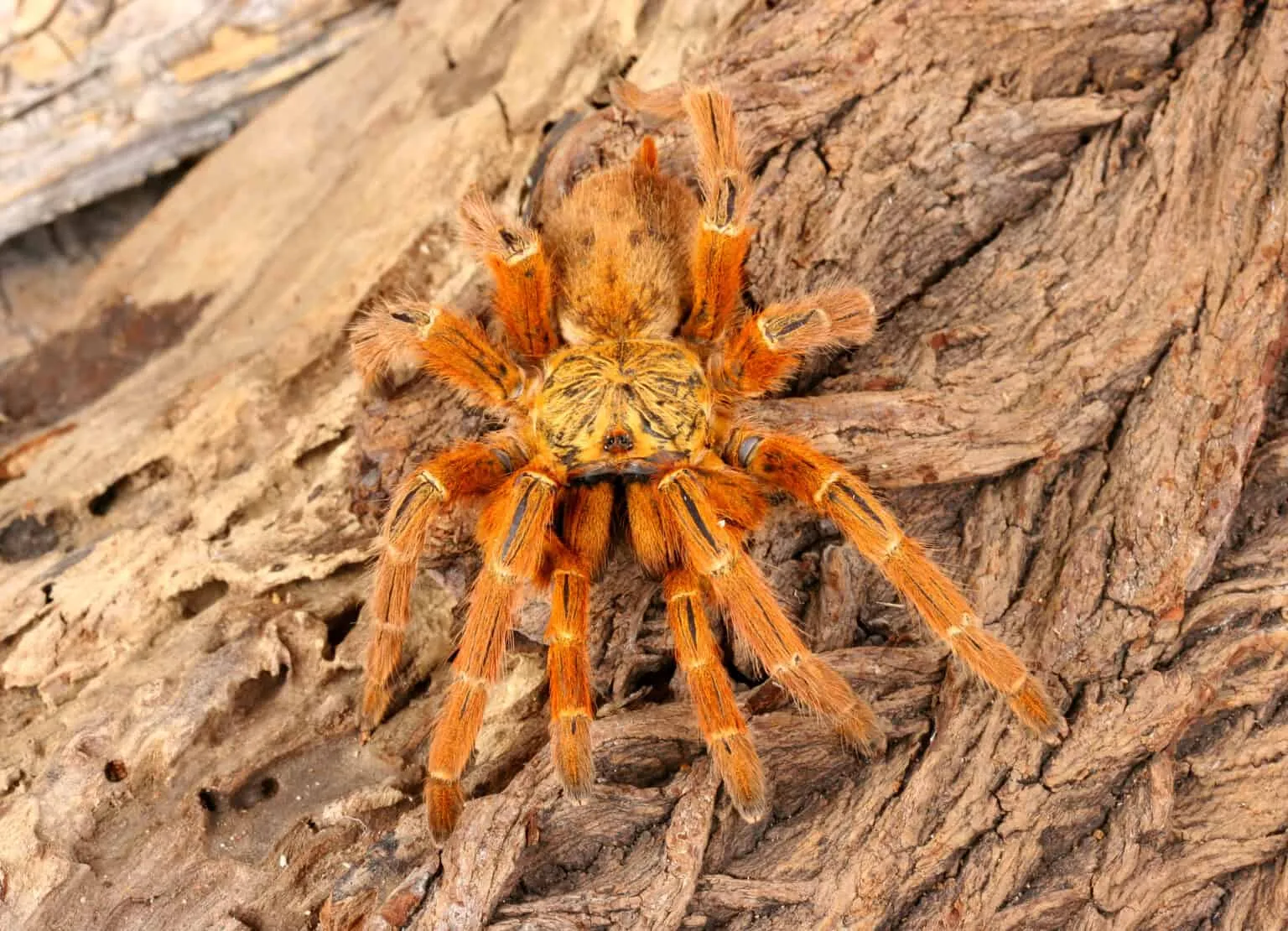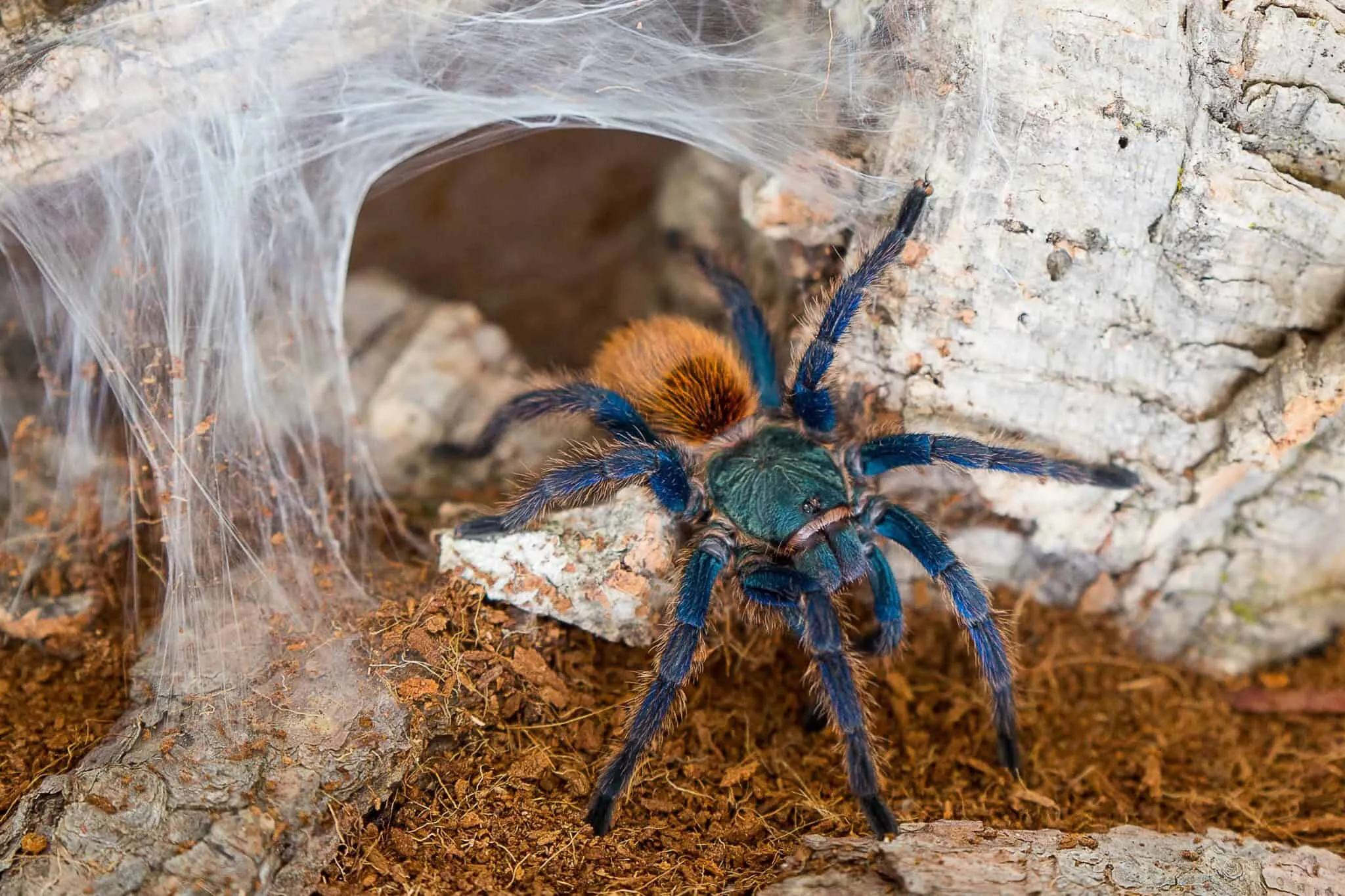What is Tarantula’s Native Range?
The term “native range” refers to the geographic area where a species naturally occurs. For tarantulas, this encompasses the regions where they have evolved and are found without human intervention. Understanding a tarantula’s native range is crucial for their conservation, as it helps scientists and enthusiasts alike understand their habitat needs, potential threats, and the impact of environmental changes. The native range provides insights into the environmental conditions, prey availability, and other factors that have shaped the tarantula’s evolution and survival. It also aids in the prevention of introducing tarantulas into non-native environments where they could become invasive.
Defining Native Range
A tarantula’s native range is often determined through a combination of field observations, taxonomic studies, and genetic analysis. These methods help to map the specific regions where different tarantula species are found. The range isn’t static; it can change over time due to factors like climate change, habitat loss, and natural dispersal. Accurate delineation of the native range is essential for conservation efforts, allowing for focused protection of habitats and the implementation of management strategies to address threats.
Geographic Distribution

Tarantulas are found on nearly every continent except Antarctica. Their distribution is primarily in warmer climates. The Americas, Africa, Asia, and Australia are home to diverse tarantula species, each adapted to its specific environment. Within these continents, tarantulas occupy a variety of habitats, from deserts and grasslands to rainforests and mountainous regions. This wide range of habitats highlights the adaptability of these creatures, enabling them to thrive in various environmental conditions.
North America
North America is home to several tarantula species, primarily in the southwestern United States and parts of Mexico. These tarantulas are well-adapted to arid and semi-arid environments, often found in burrows or under rocks to regulate their body temperature and avoid predators. The habitats vary from open grasslands to scrublands. The climate in these regions plays a significant role in tarantula activity, with warmer temperatures often leading to increased activity, especially during mating seasons. These North American species are an essential part of their ecosystems.
United States
In the United States, tarantulas are most commonly found in the southwestern states. The specific species vary depending on the location, with the Texas tan tarantula and the California ebony tarantula being notable examples. These spiders are often encountered in desert regions and scrublands, where they build burrows in the ground or use natural shelters. They typically emerge from their hiding places during the evening or at night to hunt for prey. Their presence is an indicator of healthy ecosystems within their native range.
Mexico

Mexico boasts a diverse array of tarantula species, found in various habitats across the country. From the arid deserts of the north to the humid rainforests of the south, tarantulas have adapted to a wide range of environmental conditions. Many species are endemic to Mexico, meaning they are found nowhere else in the world. Their presence contributes significantly to the biodiversity of the region, playing a vital role in their ecosystems. Conservation efforts are crucial to protecting these unique species and their habitats from threats like deforestation and habitat loss.
South America
South America is a hotspot for tarantula diversity, with numerous species inhabiting its varied ecosystems. The continent’s warm climate and diverse habitats, including rainforests, grasslands, and mountains, provide ideal conditions for tarantulas to thrive. From the colorful species of the Amazon rainforest to the more arid-adapted species in the Andes, South American tarantulas showcase a wide range of adaptations. These spiders play an important role in their ecosystems, helping to control insect populations.
Brazil
Brazil, particularly the Amazon rainforest, is home to a vast number of tarantula species. The humid, tropical environment supports a rich biodiversity, making it a prime habitat for these arachnids. Brazilian tarantulas exhibit a range of sizes, colors, and behaviors. Some species are known for their defensive hairs. The conservation of their habitat is critical, as deforestation and habitat destruction pose significant threats. Efforts to protect the Amazon rainforest are essential to ensuring the survival of these fascinating creatures.
Colombia

Colombia’s diverse ecosystems, from rainforests to high-altitude grasslands, provide habitats for various tarantula species. The country’s location in the equatorial region contributes to the ideal warm climate these creatures need. Colombian tarantulas vary in appearance and behavior. They are often found in burrows, under rocks, or in the foliage. Protecting their native habitats from deforestation, agricultural expansion, and climate change is essential to their survival. Conservation projects and educational initiatives play a vital role in this effort.
Asia
Asia is home to a remarkable variety of tarantula species, adapted to a wide range of climates and habitats. From the tropical rainforests of Southeast Asia to the drier regions of India, these spiders display diverse behaviors and appearances. Many Asian tarantulas are known for their impressive size and striking coloration. The increasing demand for tarantulas in the pet trade and the loss of their natural habitats pose significant threats to these populations. Protecting their native range is vital for their survival and for maintaining the ecological balance of their ecosystems.
India
India’s varied landscape, encompassing tropical forests, arid regions, and mountainous areas, supports a diverse array of tarantula species. The Indian ornamental tarantula is a notable example, known for its vibrant colors and arboreal lifestyle. These spiders contribute to the control of insect populations within their native environments. The primary threats to their habitats include deforestation, habitat fragmentation, and the illegal pet trade. Conservation efforts, including habitat preservation and stricter regulations on the collection and trade of tarantulas, are essential for their protection.
Southeast Asia

Southeast Asia’s tropical climate and lush environments provide ideal conditions for many tarantula species. Countries such as Thailand, Malaysia, and Indonesia are home to a diverse array of tarantulas, including both terrestrial and arboreal species. These spiders are often brightly colored and exhibit a range of behaviors. Habitat loss due to deforestation and agricultural expansion, as well as the illegal pet trade, are major threats to these populations. Conservation efforts that focus on habitat protection, sustainable practices, and education are critical to their survival.
Africa
Africa’s diverse habitats, from savannas to rainforests, provide a home to many tarantula species. These spiders have adapted to a wide range of environmental conditions, displaying a variety of behaviors and appearances. African tarantulas play an important role in their ecosystems, helping to control insect populations and serving as a food source for other animals. Habitat loss, due to deforestation and agriculture, and the pet trade, pose significant threats. Conserving their habitats through protected areas and sustainable land management is crucial.
Specific Species
Each tarantula species has a specific native range determined by environmental factors and evolutionary adaptations. Some species, like the Chilean rose tarantula, are popular in the pet trade and originate from the arid regions of Chile. Others, like the Goliath birdeater, are found in the rainforests of South America. These differences highlight the importance of understanding individual species’ needs when addressing conservation and habitat protection. Their specific requirements vary considerably. Careful research and conservation efforts are essential to protect these diverse species.
Environmental Factors

A tarantula’s native range is shaped by a combination of environmental factors. These include climate, temperature, humidity, and the availability of suitable habitats. The spiders are ectotherms, which means they rely on external sources for their body heat. Therefore, they are strongly influenced by temperature. Humidity levels affect their hydration, and their habitat preferences are dictated by the availability of food and suitable shelter. Understanding these factors is key to predicting species distributions and implementing effective conservation strategies.
Climate and Temperature
Climate and temperature play a crucial role in determining a tarantula’s native range. Tarantulas typically thrive in warm environments, with optimal temperatures for activity and reproduction. Temperature extremes, both hot and cold, can limit their distribution. Changes in climate, such as global warming, can impact their habitats, potentially shifting or shrinking their native ranges. This makes monitoring climatic conditions vital to conservation efforts.
Habitat Types
Tarantulas occupy various habitats, including deserts, grasslands, rainforests, and even mountainous regions. Their habitat preferences are influenced by factors such as prey availability, shelter, and suitable soil for burrowing. The availability of these resources directly affects population density and distribution. Conservation efforts must focus on protecting a variety of habitats to ensure the survival of tarantula species, providing them with the environments they need to thrive and reproduce, securing their future.
Conservation Status

Many tarantula species face threats due to habitat loss, climate change, and the pet trade. Conservation efforts aim to protect these fascinating creatures and their habitats. Assessment of the conservation status is essential. This includes understanding the threats they face and implementing effective strategies to mitigate these risks. This may involve establishing protected areas, enforcing regulations on trade, and promoting sustainable land use practices.
Threats to Habitat
Habitat loss due to deforestation, urbanization, and agriculture poses the biggest threat to tarantulas. These activities destroy their natural environments, leaving the spiders with nowhere to live and reproduce. Climate change also affects tarantula habitats. Changes in temperature and rainfall patterns can disrupt ecosystems, reducing the availability of food and resources. Habitat fragmentation further isolates populations. Conserving and restoring habitats is essential to their survival.
Conservation Efforts
Conservation efforts include establishing protected areas, such as national parks and reserves, where tarantulas and their habitats are safeguarded from threats. Enforcing regulations on the pet trade, including prohibiting the capture and sale of wild-caught tarantulas, is also crucial. Furthermore, promoting sustainable land use practices, such as agroforestry and responsible forestry, can help minimize habitat destruction. Public education and awareness campaigns are also vital to increasing understanding and support for tarantula conservation.
Interesting Facts
Tarantulas are among the most intriguing creatures on Earth. They display a range of interesting behaviors, from their elaborate courtship rituals to their hunting strategies. Learning about their unique adaptations can inspire wonder and foster a greater appreciation for biodiversity. Understanding these behaviors and adaptations can also help us develop more effective conservation strategies. The more we learn, the better equipped we are to ensure these amazing creatures can continue to fascinate future generations.
Size and Appearance
Tarantulas exhibit remarkable variation in size and appearance. Some species, like the Goliath birdeater, are among the largest spiders in the world, with leg spans reaching over a foot. Others are much smaller, with leg spans of only a few inches. Their colors can vary widely, from subtle browns and blacks to vibrant blues, oranges, and reds. Their appearance often reflects their environment, with colors and patterns that provide camouflage. The variations are fascinating and demonstrate the incredible diversity within this spider group.
Diet and Behavior
Tarantulas are primarily carnivorous, feeding on insects, small vertebrates, and sometimes even other tarantulas. Their hunting strategies vary. Some are ambush predators, waiting patiently for prey to come within range. Others actively pursue their meals. Courtship behaviors are often elaborate, with males performing intricate displays to attract females. Their behaviors are finely tuned to their environments. Understanding their diet and behaviors helps us to learn more about their ecological roles.
Conclusion
Understanding the tarantula native range is key to conservation. By knowing where these spiders live, we can better protect their habitats and the species themselves. From North America to South America, Asia, and Africa, tarantulas play vital roles in their ecosystems. Conserving their habitats, regulating the pet trade, and increasing public awareness are crucial. Continued research and conservation efforts will ensure that these fascinating creatures thrive for generations to come. Protecting their native ranges secures the future of these incredible spiders and the ecological balance of their homes.
